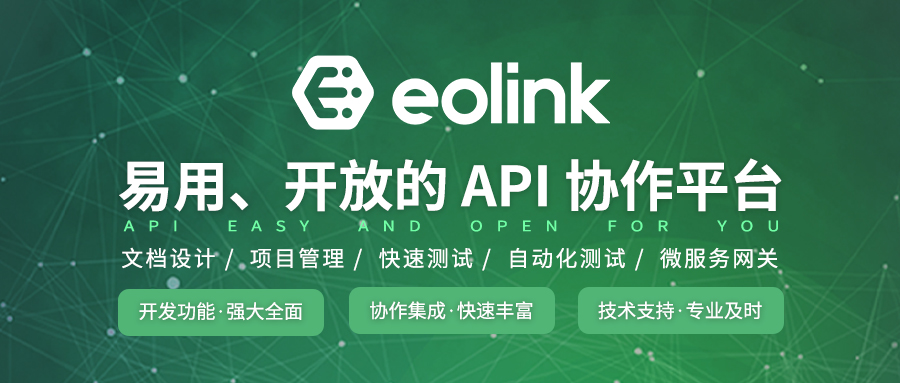多平台统一管理软件接口,如何实现多平台统一管理软件接口
311
2022-09-24

详细聊聊SpringBoot中动态切换数据源的方法
其实这个表示有点不太对,应该是 Druid 动态切换数据源的方法,只是应用在了 springboot 框架中,准备代码准备了半天,之前在一次数据库迁移中使用了,发现 Druid 还是很强大的,用来做动态数据源切换很方便。
首先这里的场景跟我原来用的有点点区别,在项目中使用的是通过配置中心控制数据源切换,统一切换,而这里的例子多加了个可以根据接口注解配置
第一部分是最核心的,如何基于 Spring JDBC 和 Druid 来实现数据源切换,是继承了org.springframework.jdbc.datasource.lookup.AbstractRoutingDataSource 这个类,他的deteuQWIbkmvrmineCurrentLookupKey方法会被调用来获得用来决定选择那个数据源的对象,也就是 lookupKey,也可以通过这个类看到就是通过这个 lookupKey 来路由找到数据源。
public class DynamicDataSource extends AbstractRoutingDataSource {
@Override
protected Object determineCurrentLookupKey() {
if (DatabaseContextHolder.getDatabaseType() != null) {
return DatabaseContextHolder.getDatabaseType().getName();
}
return DatabaseType.MASTER1.getName();
}
}
而如何使用这个 lookupKey 呢,就涉及到我们的 DataSource 配置了,原来就是我们可以直接通过spring 的 jdbc 配置数据源,像这样
现在我们要使用 Druid 作为数据源了,然后配置 DynamicDataSource的参数,通过 key 来选择对应的 DataSource,也就是下面配的 master1 和 master2
destroy-method="close" p:driverClassName="com.mysql.cj.jdbc.Driver" p:url="${master1.demo.datasource.url}" p:username="${master1.demo.datasource.username}" p:password="${master1.demo.datasource.password}" p:initialSize="5" p:minIdle="1" p:maxActive="10" p:maxWait="60000" p:timeBetweenEvictionRunsMillis="60000" p:minEvictableIdleTimeMillis="300000" p:validationQuery="SELECT 'x'" p:testWhileIdle="true" p:testOnBorrow="false" p:testOnReturn="false" p:poolPreparedStatements="false" p:maxPoolPreparedStatementPerConnectionSize="20" p:connectionProperties="config.decrypt=true" p:filters="stat,config"/> destroy-method="close" p:driverClassName="com.mysql.cj.jdbc.Driver" p:url="${master2.demo.datasource.url}" p:username="${master2.demo.datasource.username}" p:password="${master2.demo.datasource.password}" p:initialSize="5" p:minIdle="1" p:maxActive="10" p:maxWait="60000" p:timeBetweenEvictionRunsMillis="60000" p:minEvictableIdleTimeMillis="300000" p:validationQuery="SELECT 'x'" p:testWhileIdle="true" p:testOnBorrow="false" p:testOnReturn="false" p:poolPreparedStatements="false" p:maxPoolPreparedStatementPerConnectionSize="20" p:connectionProperties="config.decrypt=true" p:filters="stat,config"/> 现在就要回到头上,介绍下这个DatabaseContextHolder,这里使用了 ThreadLocal 存放这个 DatabaseType,为啥要用这个是因为前面说的我们想要让接口层面去配置不同的数据源,要把持相互隔离不受影响,就使用了 ThreadLocal,关于它也可以看我前面写的一篇文章聊聊传说中的 ThreadLocal,而 DatabaseType 就是个简单的枚举 public class DatabaseContextHolder { public static final ThreadLocal public static DatabaseType getDatabaseType() { return databaseTypeThreadLocal.get(); } public static void putDatabaseType(DatabaseType databaseType) { databaseTypeThreadLocal.set(databaseType); } public static void clearDatabaseType() { databaseTypeThreadLocal.remove(); } } public enum DatabaseType { MASTER1("master1", "1"), MASTER2("master2", "2"); private final String name; private final String value; DatabaseType(String name, String value) { this.name = name; this.value = value; } public String getName() { return name; } public String getValue() { return value; } public static DatabaseType getDatabaseType(String name) { if (MASTER2.name.equals(name)) { return MASTER2; } return MASTER1; } } 这边可以看到就是通过动态地通过putDatabaseType设置lookupKey来进行数据源切换,要通过接口注解配置来进行设置的话,我们就需要一个注解 @Retention(RetentionPolicy.RUNTIME) @Target(ElementType.METHOD) public @interface DataSource { String value(); } 这个注解可以配置在我的接口方法上,比如这样 public interface StudentService { @DataSource("master1") public Student queryOne(); @DataSource("master2") public Student queryAnother(); } 通过切面来进行数据源的设置 @Aspect @Component @Order(-1) public class DataSourceAspect { @Pointcut("execution(* com.nicksxs.springdemo.service..*.*(..))") public void pointCut() { } uQWIbkmv@Before("pointCut()") public void before(JoinPoint point) { Object target = point.getTarget(); System.out.println(target.toString()); String method = point.getSignature().getName(); System.out.println(method); Class>[] classz = target.getClass().getInterfaces(); Class>[] parameterTypes = ((MethodSignature) point.getSignature()) .getMethod().getParameterTypes(); try { Method m = classz[0].getMethod(method, parameterTypes); System.out.println("method"+ m.getName()); if (m.isAnnotationPresent(DataSource.class)) { DataSource data = m.getAnnotation(DataSource.class); System.out.println("dataSource:"+data.value()); DatabaseContextHolder.putDatabaseType(DatabaseType.getDatabaseType(data.value())); } } catch (Exception e) { e.printStackTrace(); } } @After("pointCut()") public void after() { DatabaseContextHolder.clearDatabaseType(); } } 通过接口判断是否带有注解跟是注解的值,DatabaseType 的配置不太好,不过先忽略了,然后在切点后进行清理 这是我 master1 的数据, master2 的数据 然后跑一下简单的 demo, @Override public void run(String...args) { LOGGER.info("run here"); System.out.println(studentService.queryOne()); System.out.println(studentService.queryAnother()); } 看一下运行结果 其实这个方法应用场景不止可以用来迁移数据库,还能实现精细化的读写数据源分离之类的,算是做个简单记录和分享。 总结
destroy-method="close"
p:driverClassName="com.mysql.cj.jdbc.Driver"
p:url="${master1.demo.datasource.url}"
p:username="${master1.demo.datasource.username}"
p:password="${master1.demo.datasource.password}"
p:initialSize="5"
p:minIdle="1"
p:maxActive="10"
p:maxWait="60000"
p:timeBetweenEvictionRunsMillis="60000"
p:minEvictableIdleTimeMillis="300000"
p:validationQuery="SELECT 'x'"
p:testWhileIdle="true"
p:testOnBorrow="false"
p:testOnReturn="false"
p:poolPreparedStatements="false"
p:maxPoolPreparedStatementPerConnectionSize="20"
p:connectionProperties="config.decrypt=true"
p:filters="stat,config"/>
destroy-method="close" p:driverClassName="com.mysql.cj.jdbc.Driver" p:url="${master2.demo.datasource.url}" p:username="${master2.demo.datasource.username}" p:password="${master2.demo.datasource.password}" p:initialSize="5" p:minIdle="1" p:maxActive="10" p:maxWait="60000" p:timeBetweenEvictionRunsMillis="60000" p:minEvictableIdleTimeMillis="300000" p:validationQuery="SELECT 'x'" p:testWhileIdle="true" p:testOnBorrow="false" p:testOnReturn="false" p:poolPreparedStatements="false" p:maxPoolPreparedStatementPerConnectionSize="20" p:connectionProperties="config.decrypt=true" p:filters="stat,config"/>
destroy-method="close"
p:driverClassName="com.mysql.cj.jdbc.Driver"
p:url="${master2.demo.datasource.url}"
p:username="${master2.demo.datasource.username}"
p:password="${master2.demo.datasource.password}"
p:initialSize="5"
p:minIdle="1"
p:maxActive="10"
p:maxWait="60000"
p:timeBetweenEvictionRunsMillis="60000"
p:minEvictableIdleTimeMillis="300000"
p:validationQuery="SELECT 'x'"
p:testWhileIdle="true"
p:testOnBorrow="false"
p:testOnReturn="false"
p:poolPreparedStatements="false"
p:maxPoolPreparedStatementPerConnectionSize="20"
p:connectionProperties="config.decrypt=true"
p:filters="stat,config"/>
现在就要回到头上,介绍下这个DatabaseContextHolder,这里使用了 ThreadLocal 存放这个 DatabaseType,为啥要用这个是因为前面说的我们想要让接口层面去配置不同的数据源,要把持相互隔离不受影响,就使用了 ThreadLocal,关于它也可以看我前面写的一篇文章聊聊传说中的 ThreadLocal,而 DatabaseType 就是个简单的枚举
public class DatabaseContextHolder {
public static final ThreadLocal
public static DatabaseType getDatabaseType() {
return databaseTypeThreadLocal.get();
}
public static void putDatabaseType(DatabaseType databaseType) {
databaseTypeThreadLocal.set(databaseType);
}
public static void clearDatabaseType() {
databaseTypeThreadLocal.remove();
}
}
public enum DatabaseType {
MASTER1("master1", "1"),
MASTER2("master2", "2");
private final String name;
private final String value;
DatabaseType(String name, String value) {
this.name = name;
this.value = value;
}
public String getName() {
return name;
}
public String getValue() {
return value;
}
public static DatabaseType getDatabaseType(String name) {
if (MASTER2.name.equals(name)) {
return MASTER2;
}
return MASTER1;
}
}
这边可以看到就是通过动态地通过putDatabaseType设置lookupKey来进行数据源切换,要通过接口注解配置来进行设置的话,我们就需要一个注解
@Retention(RetentionPolicy.RUNTIME)
@Target(ElementType.METHOD)
public @interface DataSource {
String value();
}
这个注解可以配置在我的接口方法上,比如这样
public interface StudentService {
@DataSource("master1")
public Student queryOne();
@DataSource("master2")
public Student queryAnother();
}
通过切面来进行数据源的设置
@Aspect
@Component
@Order(-1)
public class DataSourceAspect {
@Pointcut("execution(* com.nicksxs.springdemo.service..*.*(..))")
public void pointCut() {
}
uQWIbkmv@Before("pointCut()")
public void before(JoinPoint point)
{
Object target = point.getTarget();
System.out.println(target.toString());
String method = point.getSignature().getName();
System.out.println(method);
Class>[] classz = target.getClass().getInterfaces();
Class>[] parameterTypes = ((MethodSignature) point.getSignature())
.getMethod().getParameterTypes();
try {
Method m = classz[0].getMethod(method, parameterTypes);
System.out.println("method"+ m.getName());
if (m.isAnnotationPresent(DataSource.class)) {
DataSource data = m.getAnnotation(DataSource.class);
System.out.println("dataSource:"+data.value());
DatabaseContextHolder.putDatabaseType(DatabaseType.getDatabaseType(data.value()));
}
} catch (Exception e) {
e.printStackTrace();
}
}
@After("pointCut()")
public void after() {
DatabaseContextHolder.clearDatabaseType();
}
}
通过接口判断是否带有注解跟是注解的值,DatabaseType 的配置不太好,不过先忽略了,然后在切点后进行清理
这是我 master1 的数据,
master2 的数据
然后跑一下简单的 demo,
@Override
public void run(String...args) {
LOGGER.info("run here");
System.out.println(studentService.queryOne());
System.out.println(studentService.queryAnother());
}
看一下运行结果
其实这个方法应用场景不止可以用来迁移数据库,还能实现精细化的读写数据源分离之类的,算是做个简单记录和分享。
总结

版权声明:本文内容由网络用户投稿,版权归原作者所有,本站不拥有其著作权,亦不承担相应法律责任。如果您发现本站中有涉嫌抄袭或描述失实的内容,请联系我们jiasou666@gmail.com 处理,核实后本网站将在24小时内删除侵权内容。
发表评论
暂时没有评论,来抢沙发吧~